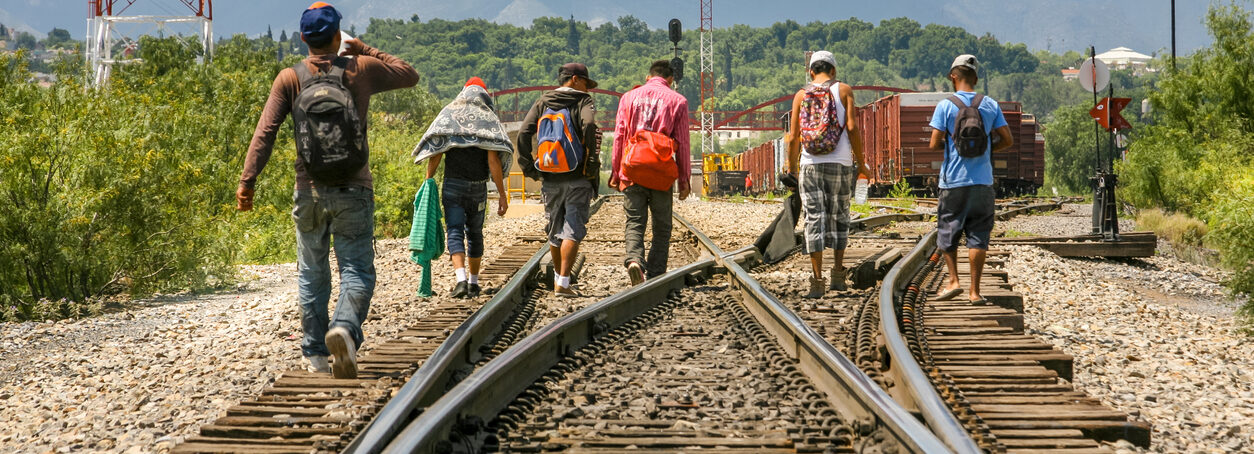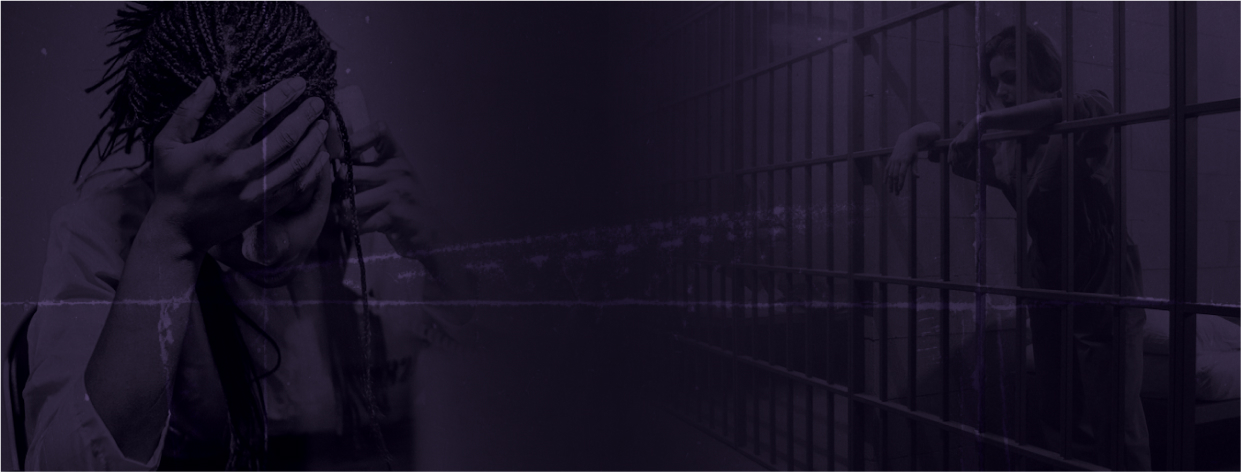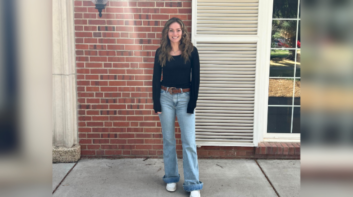Kelly Perry has lived in Bracketville, Texas, for more than 12 years. Located just 16 miles from the southern border in Kinney County, the small town has always been a close-knit community, she said, likening it to “Mayberry R.F.D.,” a 1970s sitcom known for its wholesome depiction of rural living.
But that changed in 2021 when the Biden administration effectively opened the U.S. southern border, causing Bracketville and other border communities like it to become pass-throughs and dumping grounds for tens of thousands of migrants every year.
Bracketville is located in Texas’s Del Rio Sector, one of the most heavily trafficked parts of the U.S.’s border with Mexico. Under the Biden administration, it was not unusual for the Del Rio Sector to process tens of thousands of migrants per week. In fact, at the peak of the border crisis, Border Patrol logged encounters with as many as 4,000 migrants in the sector in a 24-hour period — even after Texas authorities began allocating additional state resources to try and crack down on the overwhelming flood of migration to the area.
Perry’s community encountered many of these migrants, the vast majority of whom wandered through Bracketville on their way to bigger metropolitan areas, such as San Antonio and Houston, she said.
“They would come through our neighborhoods during the day, walking through our streets, waiting to get picked up. Then there were others who came in through the night – they didn’t want to be noticed. They’ll charge their phones on your outdoor electrical sockets during the night. And you have to be sure to lock your cars because they will sleep in them,” Perry told IW Features.
As a result, Bracketville began to lose many of the qualities that had made it a high-trust, desirable town, Perry explained. Before the border crisis, she said, kids would ride their bikes in their neighborhoods during the afternoons and wait outside in the early hours of the morning for the school bus. Ranchers would work late into the evenings because no one thought twice about being out after dark.
“That all disappeared completely,” Perry said. “It became more of — if you even wanted to have your coffee outside in the morning, you had to drink it with helicopters over your house. If I got home after dark, I wasn’t going into the house until my husband came out to get me.”
The hardest part for Bracketville’s residents, Perry said, was that they had no way of judging the motivations or intentions of the migrants who entered their town. “They might have been good people trying to come through just because they could, or they were bad people who were allowed to cross over,” she explained. “You never knew.”
And unfortunately, the latter group was just as common as the former, Perry said.
In fact, Bracketville became a type of ground zero for the Texas Department of Public Safety as law enforcement tried to track down “got-aways” and illegal migrants associated with cartel activity. High-speed chases through town and “bailouts,” a tactic used by migrants to evade law enforcement by ditching or crashing their vehicles and fleeing on foot, became so common that Bracketville officials created a text alert to notify community members when one was taking place, Perry said.
This alert process became a necessity not just because of the frequency of these chases, Perry said, but because migrants trying to escape would sometimes target local residents in an effort to distract law enforcement. In one case, Perry said a local woman had been driving near where a chase was unfolding when the driver of a vehicle allegedly carrying illegal immigrants pulled out an assault rifle and plastered the side of her car with bullets.
Just this past Christmas Eve, Perry said she received a text alert notifying her that a “bailout” had occurred less than five miles from her home, where her adult children and grandchildren were gathered for the holiday, and that “armed and dangerous” men who had taken shots at Texas Department of Public Safety officials were headed their way.
“We were told to please seek refuge in our homes and lock the doors and stay vigilant,” Perry said. “They had the choppers over our houses, and the dogs out all around our houses.”
Migrant crime became an increased problem for residents on the outskirts of town, as well, Perry said. Ranchers in particular began to deal with constant vandalism and trespassing — and sometimes even home break-ins. Perry said she knows several ranching families who returned to their homes to find their windows busted and property stolen.
“The ranching kids were taught how to use guns because of this,” Perry said, recalling an especially harrowing instance in which a ranching mom of three little girls heard her daughters start screaming one afternoon because a migrant was looking in their bedroom window.
Bracketville’s ranchers reached a point where they hoped property destruction was the worst they’d have to deal with, Perry said. And there was plenty of that to go around. Fixing fences, which migrants would cut and hop over as they made their way up from the border, became a daily and very expensive task for ranchers — as did cleaning out the water tanks for cattle and salvaging the remains of crops that had been trampled by increased foot-traffic.
Ranchers also frequently would find the bodies of migrants who didn’t survive the trek. Whether because they were injured or sick or just couldn’t keep up, these were migrants who were “left behind” by cartel members or human smugglers and left to die, Perry explained.
Migrants who weren’t left behind by smugglers rarely fared much better. Perry said Bracketville’s residents started sharing with each other and with law enforcement footage taken from trail cameras installed throughout their properties to help officials crack down on human trafficking. Perry recalled seeing one image that still haunts her: a group of young girls who looked to be about 12 years old, barely clothed, being escorted by a man who was holding an assault rifle.
In another case, Perry said a friend of hers was out walking near Las Moras Creek when she found five little girls, none older than 10 years old, who had been left by themselves. If her friend hadn’t found them, “those kids would have died,” Perry said.
Of all the consequences of the Biden administration’s border crisis, the plight of migrant children has been the most devastating. An inspector general report revealed in 2024 that President Joe Biden’s Department of Homeland Security had lost track of at least 300,000 unaccompanied migrant children after they entered the country. Many of them, Perry said, likely ended up in situations like the young girls seen in the trail camera footage.
“They’re responsible in my eyes for all those children that were sold into the sex trade,” Perry said of the Biden administration. “Many of [the children] are still in it — there’s no escaping for them, and that is on [the Biden administration]. Absolutely on them. They hurt those children. They didn’t just allow it, they implemented it.”
And yet trying to get the Biden administration to pay attention to and care about the costs of the border crisis, including the costs incurred by border towns like Bracketville, was impossible, Perry said. For the first two years of Biden’s presidency, she added, it was like pulling teeth just to get the word out about the havoc the Biden administration’s border policies were wreaking in her community.
“We asked for help and no one came,” Perry said.
So Perry and a few other residents from Bracketville hit the road, speaking at various club meetings across the state of Texas and even holding smaller-scale rallies to try and raise awareness about the border crisis.
And despite what the liberal media might say, the point of these events was never to drum up anti-immigrant sentiment, Perry said. In fact, both of Perry’s daughters-in-law are migrants from Mexico who recently became U.S. citizens.
“We just want them to come through the right way. That way you paid the price to come live in a safer place, and you then can know that your children are also living in a safer place,” Perry said.
Local officials tried to work their way up the political chain as well. In the summer of 2022, for example, Kinney County officials declared an “invasion” of their communities, urging the state and federal government to “immediately prevent and/or remove all persons invading the sovereignty” of Texas and the U.S.
“I look back now and I know people just didn’t have a clue. Everyone was just doing what they knew,” Perry said. “We were on our own.”
Though Texas eventually did increase its own efforts to police the southern border and assist affected communities, Perry said it wasn’t until President Donald Trump took office in January of this year that Bracketville finally experienced some relief.
“It was an immediate change,” she said.
Whereas Bracketville was used to seeing hundreds, sometimes even thousands, of migrants pass through every single week under Biden, now the town barely sees any at all, Perry said.
“There’s no one coming through. None,” she said. “Maybe two a week compared to the thousands and thousands and thousands that came across under Biden.”
Perry said she hopes the strengthened border enforcement, and the reduction of chaos that has accompanied it, will restore Bracketville back to being the high-trust community she first moved to years ago.
“I’m hoping someday it will come back,” she said. “But we only have four years to fortify our state and our country. To think we would have to go back to where we were, I don’t think we would survive it.”










